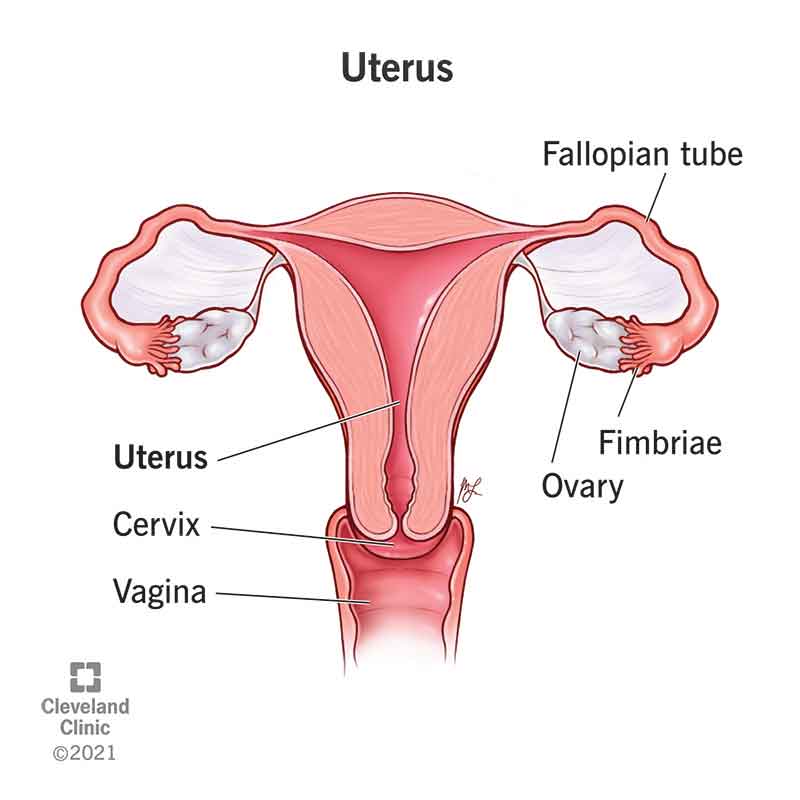OB Lecture Exam 1
1/52
Earn XP
Description and Tags
ch. 4 (assessment and health promotion), ch. 12 (conception and fetal development)
Name | Mastery | Learn | Test | Matching | Spaced |
|---|
No study sessions yet.
53 Terms
ch. 4 - what are the functions of the uterus?
contraction during labor, menstrual bleeding, & location of sperm cells

ch. 4 - at the end of the menstrual cycle, what low levels of hormones stimulate the hypothalamus to secrete GnRH?
estrogen and progesterone
ch. 4 - a marked surge in what hormone precedes the release of the ovum from the Graafian follicle?
LH (day 13-14 of a 28-day cycle)
ch. 4 - what happens if fertilization and implantation does not occur?
progesterone and estrogen levels drop, menstruation, & hypothalamus secretes GnRH
ch. 4 - menstrual phase (endometrial cycle)
shedding of the endometrium (1-5 days)
ch. 4 - proliferative phase (endometrial cycle)
building of the endometrium under the influence estrogen; “the builder”
ch. 4 - secretory phase (endometrial cycle)
marked swelling and growth due to progesterone; “the maintainer”
ch. 4 - ischemic phase (endometrial cycle)
blood supply to endometrium is blocked and necrosis occurs
ch. 4 - what are two possible things that occur at the end of the endometrial cycle?
menses or pregnancy
ch. 4 - follicular phase (ovarian cycle)
days 1-14 (can vary in length)ch
ch. 4 - ovulation (ovarian cycle)
occurs on day 14 in length of cycle, midcycle bleeding, mittelschmerz, & thin cervical mucus
ch. 4 - luteal phase (ovarian cycle)
days 15-28 ends with onset of menses
ch. 12 - conception
one egg and one sperm join, starting pregnancy; creates a cell with 46 chromosomes
ch. 12 - mitosis
how body cells grow, repair, and replace themselves; creates two identical cells
ch. 12 - meiosis
how sex cells are made; it cuts the number of chromosomes in half, from 46 to 23
ch. 12 - oogenesis
the process of making eggs; it starts before birth
ch. 12 - spermatogenesis
the process in males where sperm cells grow and mature into sperm
ch. 12 - scrotum
each part (two parts) holds a testis, an epididymis, and part of the spermatic cordc
ch. 12 - testes
the main male reproductive organs; they make testosterone and produce sperm
ch. 12 - epididymis
on the back of each testis; carries sperm from the testes to the vas deferens
ch. 12 - ductus (vans) deferens
a tube that continues from the epididymis and carries sperm to the ejaculatory ducts
ch. 12 - ejaculatory ducts
carry sperm into the urethra and add fluids from the prostate to help sperm work properly
ch. 12 - seminal vesicle
responsible for producing most of the components that make up semen
ch. 12 - prostate
it makes fluid that mixes with sperm and other fluids to form semen
ch. 12 - urethra
runs from the bladder to the penis; it carries semen and sperm out of the body during sex
ch. 12 - how long is ova fertile?
12-24 hours
ch. 12 - how long does sperm survive for?
24-72 hours
ch. 12 - capacitation
the process that makes sperm able to fertilize an egg after entering the female body
ch. 12 - acrosome reaction
when the tip of the sperm releases enzymes to break through the outer layer of the egg
ch. 12 - the process of fertilization
blastomere is divided: embryoblast (becomes baby) and trophoblast (becomes placenta)
ch. 12 - pre-embryonic
days 1-14
ch. 12 - embryo
the stage from the 2nd or 3rd week after fertilization up to the 8th week
ch. 12 - fetus
9th week until 40th week
ch. 12 - what is the order of embryonic development?
cellular multiplication, cellular differentiation, and development of organ systems
ch. 12 - ectoderm (top layer)
makes skin, glands, hair, and nails
ch. 12 - mesoderm (middle layer)
forms bones, teeth, and muscles
ch. 12 - endoderm (bottom layer)
becomes the lining of the lungs and digestive system
ch. 12 - what are the two membranes that surround the fetus?
chorion and amnion
ch. 12 - chorion
outer membrane that comes from trophoblast; the first layer reached during amniotomy
ch. 12 - amnion
the inner membrane that forms from the blastocyst and is closest to the baby
ch. 12 - what are the functions of the amniotic fluid?
maintain temperature, protects fetus, and medium for movement
ch. 12 - what are the functions of the placenta?
endocrine gland function, metabolic functions, and adequate circulation
ch. 12 - fetal maturation
the baby is called a fetus from 9 weeks to the end of pregnancy
ch. 12 - viability
the point when a baby can survive outside the wombc
ch. 12 - what is viability age in Texas?
20 weeks or 350 grams
ch. 12 - placental blood circulation is blood that flows between the mother and baby. the umbilical cord contains how many vessels and what kinds?
3 vessels; AVA = artery, vein, artery
ch. 12 - what three shunts does fetal circulation use to move blood?
ductus venosus, foramen ovale, and ductus arteriosus
ch. 12 - ductus venosus
sends blood from the umbilical vein to the inferior vena cava
ch. 12 - foramen ovale
lets blood flow from the right atrium to the left atrium
ch. 12 - ductus arteriosus
connects the pulmonary artery to the aorta, skipping the lungs
ch. 12 - dizygotic (fraternal) twins
2 eggs + 2 sperm, 2 placentas, and 2 amnions and 2 chorions
ch. 12 - monozygotic (identical) twins
1 egg + 1 sperm, share 1 placenta, and may have 1 or 2 amnions/chorions
ch. 12 - what infectious agents can cross the placenta?
rubella, cytomegalovirus, T. gondii (toxoplasmosis), and T. pallidum (syphilis)